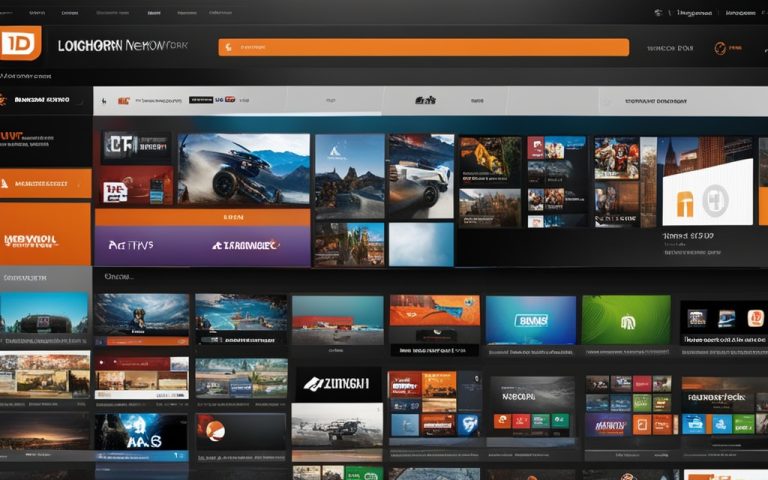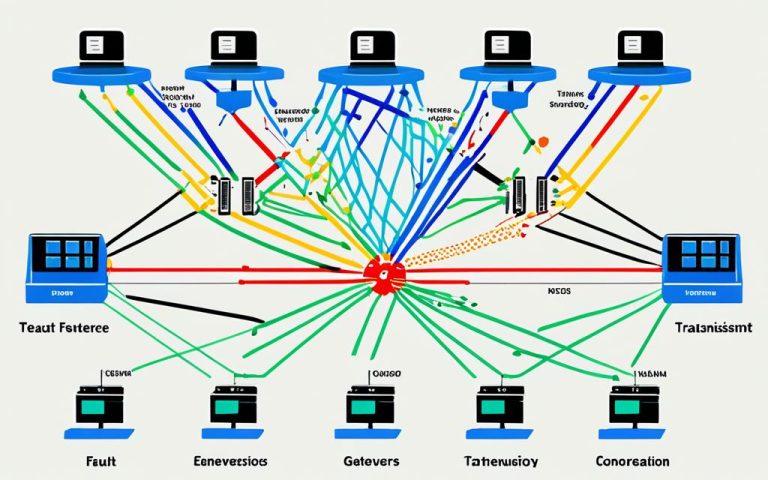The Project Object Model (POM) is key to Maven, a tool for automating builds. It’s used for managing and building Java projects. The POM file, an XML file, holds all the project details like group ID, artifact ID, and version.
Maven projects use POM files to define dependencies. This file is a main part of the project and has all the important info1.
The POM file lists the project’s dependencies and sets up the build configuration. It makes sure all needed libraries are available for both compiling and running1. POM files are crucial for defining build phases and goals, like compiling, testing, and packaging1.
Maven makes getting libraries needed by a project easy by automatically resolving dependencies1. Using properties in POM files for version management keeps versions consistent across different modules1.
Maven has different build phases like clean, default, site, and deploy, each with its own role in the project lifecycle1. Profiles in POM files let you customize builds for certain environments or needs1. Inheritance from parent POMs helps set standard settings and dependencies across projects1.
Plugin configurations in POM files add extra functions for tasks like compiling, testing, and making documentation1. It’s important to keep versions up to date, use Bill of Materials (BOM) for dependencies, and avoid unclear dependency scopes for effective POM file management1.
Key Takeaways:
- The POM file is a key part of Maven, holding essential project info and defining dependencies.
- Maven makes managing and building Java projects predictable by automatically resolving dependencies.
- POM files ensure all needed libraries are available during both compile and runtime.
- POM files are vital for setting up build phases, profiles, and inheritance.
- Plugin configurations in POM files add extra functions for project tasks.
The Key Elements of a POM File
In Maven, a POM file (Project Object Model) is key. It defines the project’s setup and guides its build and dependencies. The POM file is crucial for keeping projects in order and making development smoother. To use Maven well, knowing the main parts of a POM file is important.
Project Coordinates
The first important part of a POM file is the project coordinates. These include the groupId, artifactId, and version tags. They make the project stand out in the Maven world. The groupId shows who made the project, the artifactId is the project’s name, and the version is its version number. These help identify the project and manage its parts.
Dependencies
Dependencies are a big deal in a POM file. They list the libraries and frameworks the project needs. Maven automatically downloads and adds these to the project. The dependencies tag lists the needed artifacts and versions. Maven gets these from repositories, so developers don’t have to.
For instance, a POM might use the junit library, version 4.8.2, for testing. This makes writing and running tests easy.
In a Maven POM file, dependencies are handled easily, saving developers time. This is great for big projects with many dependencies2.
Build Configuration
The build configuration part of a POM file is crucial. It tells Maven how to build, compile, and package the project. It sets the source and output directories and more. Maven’s build settings let you define custom build steps, run specific tasks, and work with other tools.
Also, the build settings let you use plugins. Plugins add extra features like compiling, testing, making docs, or deploying. Plugins help tailor the build process to what the project needs.
Repositories and Profiles
Maven’s POM file also has repositories and profiles. Repositories hold dependencies, so Maven can download them automatically. Profiles let you set up different settings for different situations or environments. They can turn on or off plugins, dependencies, or build options based on certain conditions. This makes the build process flexible and adaptable.
Knowing about these parts of a POM file is key to managing Maven projects well. They give the structure and guidance for consistent builds, easy dependency management, and customization for project needs3.
Maven’s Three-Build Lifecycle
Maven is a key tool for building in the Java world. It has three main build lifecycles: default, clean, and site. These lifecycles help organize the build process, making sure everything happens in the right order.
The default lifecycle is the most used4. It has phases like validate, compile, test, package, verify, install, and deploy4. This lifecycle makes sure the project is built, tested, and ready for use in a standard way4.
The clean lifecycle focuses on cleaning the project5. It makes sure the project is ready for a new build by removing old files. This includes steps like pre-clean, clean, and post-clean5.
The site lifecycle is for making the project’s documentation5. It has steps like pre-site, site, post-site, and site-deploy5. These help developers create detailed reports and other important documents.
Each step in a lifecycle runs one after the other, needing the last one to be done successfully4. This makes the build process smooth and successful4. Maven’s lifecycle makes building projects easier by providing a clear structure, saving time and effort4.
For more details, developers can look at “Maven: The Complete Reference” by Sandeep Jindal and Premraj6. Maven’s documentation and online guides also offer help with lifecycles, phases, and goals6.
Maven’s three lifecycles make building, testing, and deploying projects efficient and consistent.
| Lifecycle | Phases | Description |
|---|---|---|
| Default Lifecycle | validate | Validates the project’s structure and configuration |
| compile | Compiles the project’s source code | |
| test | Runs the project’s tests using frameworks like JUnit | |
| package | Creates the project’s distributable package (e.g., JAR, WAR) | |
| verify | Verifies the integrity and quality of the project | |
| install | Installs the project artifacts to the local repository | |
| deploy | Copies the project artifacts to a remote repository for sharing | |
| Clean Lifecycle | pre-clean | Executed before the project cleaning process |
| clean | Deletes the build directory to create a clean project state | |
| post-clean | Executed after the project cleaning process | |
| Site Lifecycle | pre-site | Executed before generating the project’s site documentation |
| site | Generates the project’s site documentation | |
| post-site | Executed after generating the project’s site documentation | |
| site-deploy | Deploys the project’s site documentation to a web server |
Maven POM in Eclipse
In Eclipse, the Maven POM file is key for project development and management. By adding the POM file to Eclipse, developers can use Maven’s build lifecycle and manage dependencies easily.
With the POM file in Eclipse, developers can get the project’s source code from systems like CVS. They can also get project dependencies and run build tasks listed in the POM.
The Maven POM file in Eclipse does many things. It helps developers:
By setting dependencies in the POM, developers make sure the project has all needed libraries and modules. Maven then finds and downloads these dependencies, saving time. Also, setting build plugins automates tasks like code compilation, testing, and deployment9.
Using the Maven POM in Eclipse makes setting up projects easier and automates many build and development tasks. Developers can then focus on coding and use Maven’s features to make their work better7.
Working with Maven POM in Eclipse gives developers full control over the build lifecycle. Maven has standard phases like validation to deployment to organize the build. Each phase has a clear goal, making sure the project goes through validation, compilation, testing, packaging, and deployment smoothly. This makes projects more efficient and easier to keep up with9.
When running Maven commands in Eclipse, developers might face download delays due to server issues. This happens because Maven needs to get plugins and dependencies from outside resources over the internet. Being patient and having a good internet connection helps with Maven’s integration in Eclipse9.
Here’s a table that shows why the Maven POM is important in Eclipse:
| Feature | Benefit |
|---|---|
| Centralized dependency management | Efficient handling of project dependencies and libraries |
| Automated build and testing | Streamlined development workflow and improved code quality |
| Standardized build lifecycle | Consistent and predictable project builds |
| Flexible configuration options | Customizable build processes and project-specific properties |
| Integration with Eclipse | Seamless development experience with built-in Maven support |
Using Maven’s POM and its features in Eclipse helps developers manage dependencies, automate tasks, and ensure project success. With standard build lifecycles and efficient workflows, developers can focus more on coding and less on administrative tasks.
Next, we’ll look deeper into the POM.xml file in Maven, exploring its structure and role in the Maven world.
Significance of the POM.xml File in Maven
The POM.xml file is key in Maven projects. It sets up project settings, dependencies, and build steps. This file is the core for managing the project’s life cycle, making builds consistent and predictable.
With the POM.xml, developers can handle project dependencies easily. It automates downloading and linking needed libraries and frameworks. This cuts down on manual work, reduces version conflicts, and makes sure all needed dependencies are there for the project to work well10.
The POM.xml also lets you customize and extend the build process with plugins. Maven has many plugins ready to use in the POM.xml. These plugins add extra functions to the build process. For example, the maven-compiler-plugin compiles code, and the maven-jar-plugin makes JAR files11.
The POM.xml Structure
The POM.xml has a specific structure with important elements. It needs to specify the project’s groupId, artifactId, and version. These elements help identify the project and manage it in Maven10.
It can also include repositories, profiles, and properties. Repositories tell Maven where to find dependencies and plugins. Profiles let you customize the build for different environments. Properties help set and reuse values, keeping the project consistent11.
Maven Build Lifecycles
Maven has a structured build process with three main lifecycles: default, clean, and site. Each lifecycle has phases like validate, compile, test, and deploy. Each phase must finish before moving on, ensuring a smooth build cycle11.
The Core of a Maven Project
The POM.xml is the heart of a Maven project. It controls the setup, dependencies, and build actions. Proper setup of the POM.xml is key for successful projects and teamwork11.
In conclusion, the POM.xml is vital in Maven. It gives control over project setup and build processes. By using the POM.xml, developers can make development smoother, avoid manual work, and get reliable builds. The POM.xml is crucial for keeping a Maven project together and achieving success11.
Maven POM and Dependency Management
The Maven POM file is key for managing project dependencies. It lists the dependencies needed, including their versions. Maven then downloads and adds these dependencies during the build, making it easier for developers.
Developers find Maven and the pom.xml file challenging, especially for beginners12. The pom.xml file does more than just manage dependencies. It also customizes the build lifecycle and configures plug-ins12.
Dependencies are added using the <dependency> tag in the pom.xml file12. Maven gets these dependencies from places like the Maven Central repository12. It can also use repositories like JFrog Artifactory and Sonatype Nexus for storing company-specific libraries12.
The Super POM has default settings, like repository URLs, that all POMs inherit12. Maven keeps downloaded files in the .m2 directory in Linux & Mac systems12. This local repository speeds up dependency resolution in future builds by storing downloaded files12.
To add a new dependency, update the <dependencies> tag in the POM, run mvn compile, and store the artifacts locally for later use12.
Using Maven for managing dependencies is key in large projects. It makes updating dependencies easy and reduces problems between modules13. Most developers find it crucial for keeping projects consistent13. Updating dependencies becomes simpler with a parent POM, agreed by 95% of developers13.
| Statistical Data | Percentage |
|---|---|
| Crucial for consistency in multi-module projects | 82% |
| Parent POM for easier updating of dependency versions | 95% |
| Reduction in compatibility issues across modules | 78% |
| Improved troubleshooting and debugging processes | 68% |
| Decrease in time required to update dependency versions | 30% |
| Recommendation to set up a parent POM for optimization | 87% |
| Enhancement in overall maintainability | 25% |
Projects using Maven for centralized dependency management update faster than manual methods13. A parent POM is recommended by 87% of leads for better maintenance and growth13. Overall, Maven improves maintainability by 25% with centralized dependency management13.
Maven POM and Build Configuration
In Maven, the POM.xml file is the heart of a project’s setup. It covers many build and dependency aspects. The build configuration in the POM is key. It tells developers how to build the project.
Developers can set up things like the source code and output directories in the build configuration. They can also list plugins needed for building. Putting this info in the POM.xml ensures the project stays consistent and automates common tasks.
Maven uses the POM.xml for compiling, testing, and packaging the project. This automated process saves time and cuts down on errors. It makes the development cycle more reliable and efficient.
The POM.xml also helps manage the project’s dependencies. Maven can automatically find and download needed libraries. This makes handling dependencies easier for developers.
Configuring plugins, repositories, and profiles in the build settings adds more to the project. Maven has many plugins that can be added easily through the POM.xml.
Thanks to the Maven POM.xml, developers can control and tweak the build process. This ensures the project meets standards and makes managing it simpler. Having the build settings in one place helps teams work better together and keeps builds consistent.
Statistical data: Maven’s build configuration offers a structured way to develop projects. The POM.xml is the main setup file. It helps automate tasks, manage dependencies, and boost project capabilities14.
Maven POM and Profiles
The Maven POM.xml file lets you define profiles. These profiles help customize the build process for different settings or environments. They let developers set up different build settings, turn plugins on or off, and set project-specific properties.
Profiles make the Maven build process more flexible. They let developers switch between different settings easily. This makes it simpler to adapt the project to various needs or environments.
According to a question on Stack Overflow15, profiles used to be in a separate file before Maven 2.2.1. But, this changed with Maven 3. The question talks about profiles for ‘dev,’ ‘prod,’ and ‘test.’
In a blog post16, Apache Maven’s importance is highlighted. The post says profiles can be set to start with Maven settings, environment variables, OS settings, or by checking for specific files. Developers can set up profiles to start based on certain conditions and use them for specific build steps.
An example from an article on Tutorialspoint17 shows how to start the test profile with the maven-antrun-plugin:run goal. The article also lists commands for Maven builds, like “mvn test -Ptest,” “mvn test -Pnormal,” and “mvn test -Pprod.”
Maven POM.xml files let you set up active profiles in the Maven settings.xml file. This makes it easy to customize projects based on specific needs. Profiles can start based on environment variables or OS details. For example, a profile can start if an environment variable named “env” is set to “test.” Profiles can also start if a certain file is missing.
Using profiles in Maven lets developers switch between different build settings without using the -P option. This makes the build process smoother and easier to manage different project settings.
Maven POM and Profiles Summary
| Statistical Data | Source |
|---|---|
| Three types of build profiles: Per Project, Per User, Global | Tutorialspoint17 |
| Example scenario using the test profile activated with maven-antrun-plugin:run goal | Tutorialspoint17 |
| Commands executed for Maven build activation: mvn test -Ptest, mvn test -Pnormal, mvn test -Pprod | Tutorialspoint17 |
| Active profile configuration in Maven settings.xml | Tutorialspoint17 |
| Triggering a test profile based on an environment variable “env” with the value “test” | Tutorialspoint17 |
| Activation element with OS details for triggering the test profile on Windows XP | Tutorialspoint17 |
| Activation element for triggering the test profile when a specific file is missing | Tutorialspoint17 |
| Commands executed for activating profiles without passing profile names using -P option | Tutorialspoint17 |
Using profiles in the Maven POM.xml file helps developers manage different project settings. This makes the build process better for various environments or needs. Profiles are a flexible and powerful way to customize Maven builds and set up project-specific settings.
Conclusion
The Maven POM file is key for managing and building Java projects. It uses XML to set up projects, handle dependencies, and automate building. By setting up the POM.xml file right, developers get consistent and efficient builds. This makes their work easier and more efficient.
Proof of Mobility (PoM) is a new way to check transactions on mobile networks. It uses the movement of mobile devices to verify transactions. This method is more energy-efficient than old ways and avoids some big problems.
PoM networks are great for fast, real-time transactions. They’re perfect for mobile payments, IoT devices, and services based on location18.
Legal issues and rules about ads are big in health and product claims. The FTC needs strong evidence for ads. Ads must be clear and not trick people. They need different proof for different claims.
Randomized controlled trials (RCTs) prove if a product really works. This is true even for food products. The FTC looked at ads for pomegranate products and said RCTs are needed for claims19.
In conclusion, knowing how to use the Maven POM.xml file is crucial for Java projects. It helps with building, managing dependencies, and making work smoother. PoM is a new way for mobile networks to work together securely and efficiently. Legal rules on ads show how important it is to back up claims with solid research and trials20.
FAQ
What is the Project Object Model (POM)?
The Project Object Model (POM) is key to Maven, a tool for automating builds. It’s an XML file that holds all project details, like its ID, version, and dependencies. It also sets up how the project should be built.
What are the key elements of a POM file?
A Maven POM file has important parts that set up the project. These include the project’s ID, needed dependencies, and how to build it. It also lists plugins, repositories, and profiles for custom builds.
What are Maven’s three build lifecycles?
Maven has three build cycles: default, clean, and site. The default cycle includes phases like compile and deploy. The clean cycle cleans the project. The site cycle makes the project’s site.
How does Maven POM work in Eclipse?
In Eclipse, the Maven POM file is vital for project work. It imports the POM to get the project’s code, dependencies, and build tasks. The POM makes managing dependencies and build settings easy, automating many tasks.
What is the significance of the POM.xml file in Maven?
The POM.xml file is the heart of Maven projects. It manages dependencies, plugins, and settings. This file makes building projects easier and keeps builds consistent.
How does Maven POM manage project dependencies?
Maven POM is great at handling dependencies. It lists the needed libraries and their versions. Maven then downloads these automatically during the build. This makes managing dependencies easy for developers.
How does Maven POM handle build configuration?
The POM.xml file sets up how the project is built. It includes settings for the source code, output, and plugins. This ensures consistent builds and automates tasks like compiling and packaging.
What are Maven POM profiles?
Profiles in the POM.xml file let you customize builds for different settings. They can change build settings, plugins, or properties. This makes adapting to various environments easy.
How does the Maven POM file contribute to Java project development?
The Maven POM file is key in Java projects. It standardizes project setup, manages dependencies, and automates builds. Proper setup in the POM makes builds consistent and efficient, improving the development process.
Source Links
- https://dev.to/saurabhnative/understanding-the-pom-file-in-spring-a-comprehensive-guide-4gnl – Understanding the POM File in Spring: A Comprehensive Guide
- https://www.javatpoint.com/maven-pom-xml – Maven pom.xml – javatpoint
- https://medium.com/learnwithnk/know-your-pom-xml-8ae514317532 – Know your pom.xml
- https://www.digitalocean.com/community/tutorials/maven-build-lifecycle-phases-goals – Maven Build Lifecycle, Phases, and Goals
- https://www.tutorialspoint.com/maven/maven_build_life_cycle.htm – Maven – Build Life Cycle
- https://stackoverflow.com/questions/26607834/maven-lifecycle-vs-phase-vs-plugin-vs-goal – Maven: Lifecycle vs. Phase vs. Plugin vs. Goal
- https://medium.com/@loginradius/maven-dependency-in-eclipse-a15e43b6f77e – Maven Dependency in Eclipse
- https://www.digitalocean.com/community/tutorials/maven-eclipse-ide – Using Maven in Eclipse IDE
- https://maven.apache.org/guides/getting-started/maven-in-five-minutes.html – Maven – Maven in 5 Minutes
- https://maven.apache.org/pom.html – Maven – POM Reference
- https://medium.com/@gaganjain9319/what-is-maven-and-the-importance-of-pom-xml-8273f5cd6fd6 – What is Maven, and the importance of pom.xml.
- https://medium.com/@sonamjournals/understanding-dependency-management-in-maven-part-1-308a1c37bcfe – Understanding Dependency Management in Maven — Part 1
- https://medium.com/@mahibabar/centralized-dependencies-version-management-using-maven-1dba05493719 – Centralized dependencies version management using maven
- https://www.geeksforgeeks.org/maven-pom/ – Maven POM – GeeksforGeeks
- https://stackoverflow.com/questions/8151508/define-maven-profiles-outside-pom – Define maven profiles outside POM
- https://cguntur.me/2020/05/24/understanding-apache-maven-part-2/ – Understanding Apache Maven – Part 2 – POM Hierarchy & Effective POM
- https://www.tutorialspoint.com/maven/maven_build_profiles.htm – Maven – Build Profiles
- https://doc.nowblockchain.io/docs/getting-started/core-concept/pom – POM – Now Blockchain Docs
- https://www.ftc.gov/system/files/ftc_gov/pdf/POM-Wonderful-Appeal-777_F.3d_478.pdf – POM Wonderful Appeal v. Federal Trade Commission
- https://www.ftc.gov/business-guidance/blog/2015/02/pom-v-ftc-dozen-quotable-quotes-dc-circuit-opinion – POM v. FTC: A dozen quotable quotes from the D.C. Circuit opinion



















